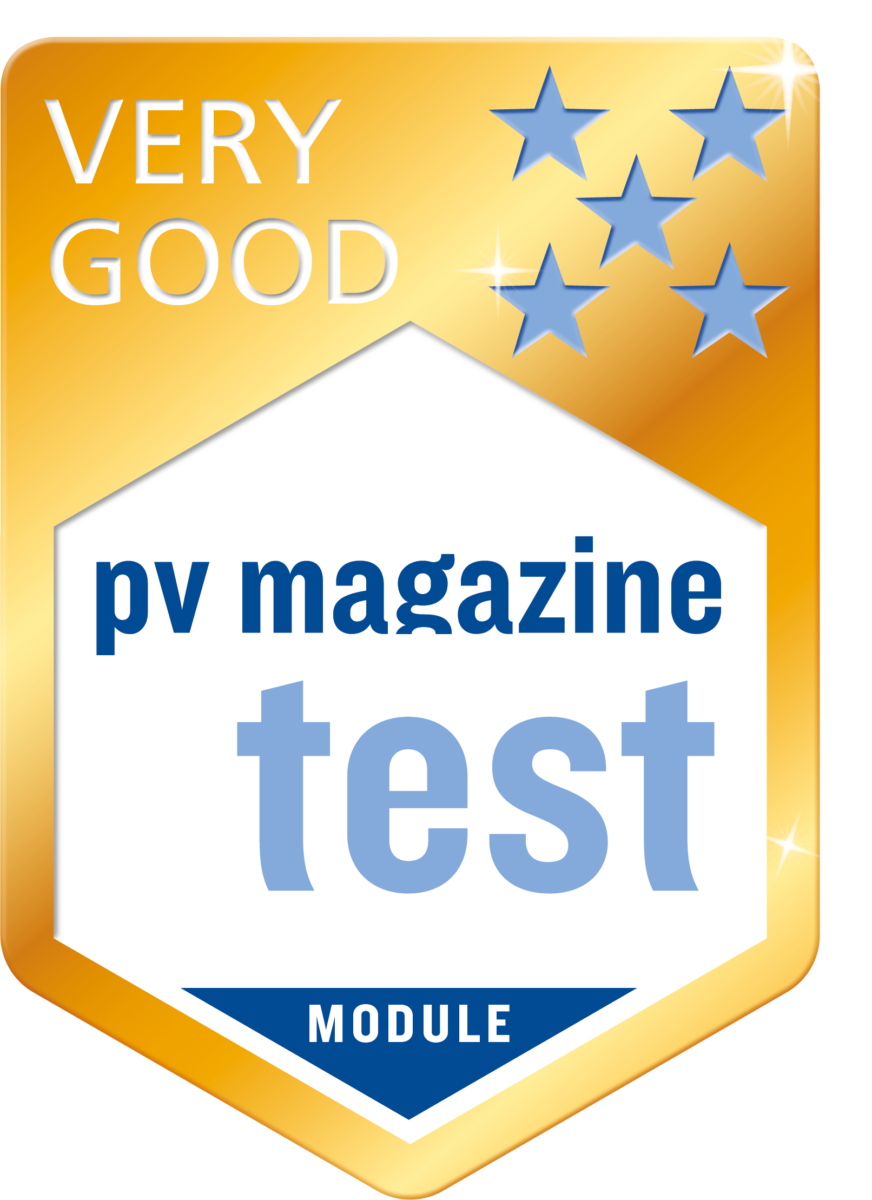Monthly energy yield data for the months from August 2018 to January 2019 is given in the table below. The graph to the right shows the total energy yield for January 2019[Feld]. Bifacial and mono PERC products continue to occupy the top five positions.
Last month, we showed the correlation between bifacial boost and irradiance: bifacial boost is inversely related to the total irradiance level. This correlation persisted for January 2019, as shown in the graph to the right. The obvious explanation is that diffuse irradiation has a much higher impact on the rear side yield, whereas strong direct irradiation has a higher impact on the front side yield. In low light conditions the diffuse portion is higher, therefore the inverse relation comes up.
Diffuse irradiance data were plotted against bifacial boost for January 2019 to better understand this trend. The percentage ratio of diffuse irradiance with respect to the total irradiance was calculated and compared to the bifacial boost. As shown in, the bifacial boost and the diffuse irradiance ratio are positively related, which further validates our findings from last month.
The graph below shows the comparison between different PV module technologies for January 2019. Bifacial modules are performing above the average energy yield level, with multi-crystalline silicon PV performing under the average energy yield level.
Notes on the energy yield measurements:
- The energy yield is given in Wh/Wp and calculated by dividing the energy produced by the module by the Pmax at STC of the module. This Pmax is the maximum STC power after a process of stabilization.
- The results are grouped in categories, per module type.
- The bifacial boost depends on many parameters: the bifaciality factor, the installation geometry, the albedo of the ground, and also the sun angle and diffuse irradiance. The ground in this case is a plastic cover simulating green grass.
George Touloupas
Director of Technology and Quality, CEA
For more detailed results and analysis from pv magazine test visit pv-magazine.com/features/pv-magazine-test
Energy yield ranking
| Product # | Product | Type | Total Aug 2018 Wh/Wp | Total Sep 2018 Wh/Wp | Total Oct 2018 Wh/Wp | Total Nov 2018 Wh/Wp | Total Dec 2018 Wh/Wp | Total Jan 2019 Wh/Wp | Grand Total Wh/Wp | Aug 2018 rank | Sep 2018 rank | Oct 2018 rank | Nov 2018 rank | Dec 2018 rank | Jan 2019 rank |
| 18 | LONGi LR6-60BP-300M | Bifacial Mono PERC | – | – | – | 78.74 | 68.82 | 68.07 | 215.6 | – | – | – | 1 | 1 | 1 |
| 17 | NSP D6L310L3A | Bifacial Mono PERC | 151.67 | 103.64 | 128.10 | 76.51 | 67.05 | 66.96 | 835.3 | 1 | 1 | 1 | 3 | 2 | 2 |
| 16 | LONGi LR6-60PE-310M 2 | Mono PERC | 142.64 | 101.43 | 125.30 | 76.57 | 67.05 | 66.40 | 816.5 | 11 | 3 | 4 | 2 | 3 | 3 |
| 1 | Jolywood JW-D60N-305 | Bifacial N-PERT | 150.97 | 102.73 | 127.00 | 75.44 | 66.68 | 65.98 | 829.1 | 2 | 2 | 2 | 5 | 4 | 4 |
| 7 | LONGi LR6-60PE-310M 1 | Mono PERC | 148.68 | 100.57 | 125.40 | 75.57 | 66.24 | 65.58 | 817.9 | 3 | 4 | 3 | 4 | 5 | 5 |
| 4 | Perlight PLM-300M-60 | Mono PERC | 145.17 | 98.77 | 122.40 | 73.68 | 65.14 | 65.15 | 801.6 | 6 | 9 | 8 | 9 | 8 | 6 |
| 10 | Recom RCM-275-6MB-4-BB21 | Mono | 145.43 | 99.46 | 123.30 | 74.09 | 65.31 | 65.06 | 801.7 | 5 | 6 | 6 | 7 | 6 | 7 |
| 14 | Sample 2 | Mono PERC | 144.80 | 96.85 | 121.70 | 73.92 | 65.12 | 64.79 | 796.5 | 8 | 13 | 9 | 8 | 9 | 8 |
| 13 | Sample 1 | Mono | 133.63 | 98.86 | 120.30 | 73.12 | 65.26 | 64.76 | 780.1 | 13 | 8 | 12 | 12 | 7 | 9 |
| 8 | Aiduo AD280-60S | Mono | 139.37 | 98.76 | 121.50 | 74.13 | 65.04 | 64.69 | 793.4 | 12 | 10 | 10 | 6 | 11 | 10 |
| 20 | Phono PS380MH-24/TH | Mono PERC | – | – | – | – | 65.10 | 64.66 | 129.8 | – | – | – | – | 10 | 11 |
| 9 | Aiduo AD265-60P | Multi | 143.74 | 97.48 | 120.80 | 73.10 | 64.29 | 64.06 | 792.1 | 9 | 11 | 11 | 13 | 12 | 12 |
| 3 | Risen RSM60-6-270P | Multi | 145.04 | 99.39 | 122.90 | 73.28 | 63.99 | 64.02 | 796.3 | 7 | 7 | 7 | 10 | 13 | 13 |
| 12 | NSP D6LM305E3A | Mono PERC | 142.85 | 97.29 | 120.30 | 72.17 | 63.80 | 63.79 | 788.0 | 10 | 12 | 13 | 14 | 14 | 14 |
| 2 | Phono MWT-60-280 | Multi MWT | 146.13 | 99.53 | 123.60 | 73.15 | 63.52 | 62.76 | 797.2 | 4 | 5 | 5 | 11 | 15 | 15 |

This content is protected by copyright and may not be reused. If you want to cooperate with us and would like to reuse some of our content, please contact: editors@pv-magazine.com.
